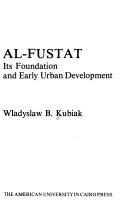Some Remarks On The Chronological Position Of The Predynastic Settlement At Maadi (Egypt) And Its Relations To The Southern Levant
Ulrich Hartung.

Overview
The Predynastic settlement of Maadi—after which the Chalcolithic Lower Egyptian Culture of the fi rst half of the 4th millennium is named—is a key site for the understanding of the interconnections between Lower and Upper Egypt, as well as between the Nile valley and the Southern Levant. Although at fi rst glance it was a rural village with agriculture as subsistence basis, the settlement—on the one hand—yielded Upper Egyptian imports which point to trade relations within the Nile valley and which enable to place the settlement into the frame of the Naqada culture chronology. On the other hand, there is evidence for different phases of connections to the southern Levant: Unusual semi-subterranean cave-like structures which—although much less sophisticated— resemble the subterranean installations of the Chalcolithic Beersheva Culture. Later still Maadi must have operated trade connections with several EB IA settlements in southern Palestine to acquire copper and other commodities. This chronologically diverging evidence is discussed here and complemented by a series of radiocarbon dates retrieved from renewed excavations at Maadi by the German Archaeological Institute, Cairo. The dates confi rm that the chronological position of the settlement is contemporaneous with the transition from the Late Chalcolithic to the Early Bronze Age in the Southern Levant





















